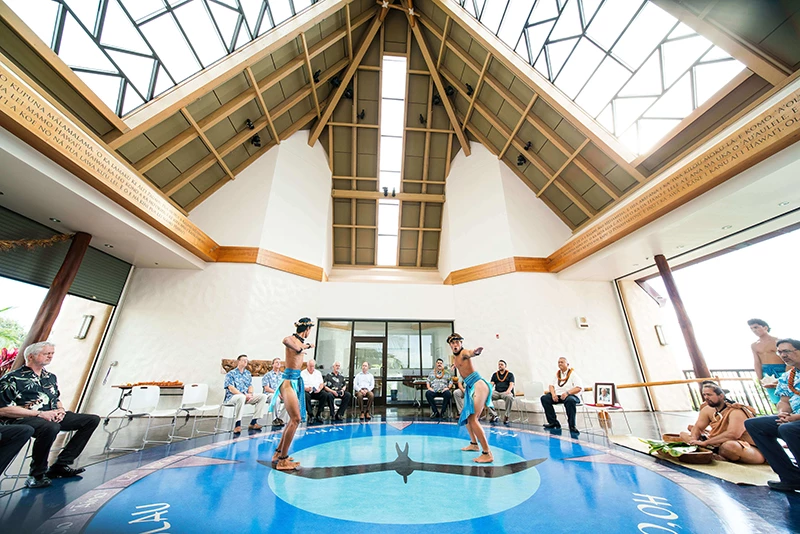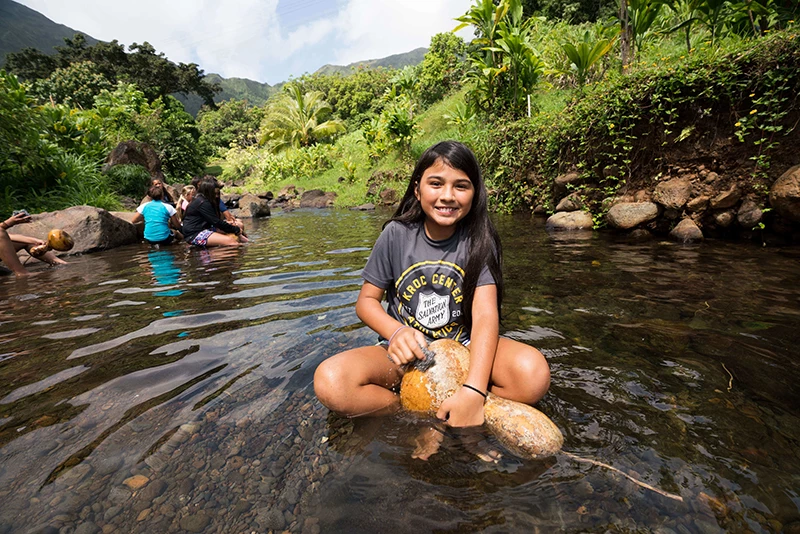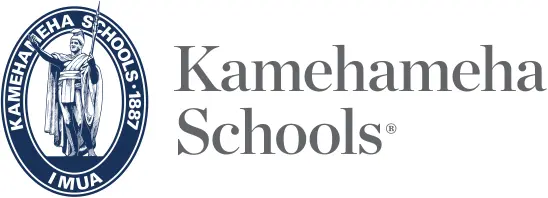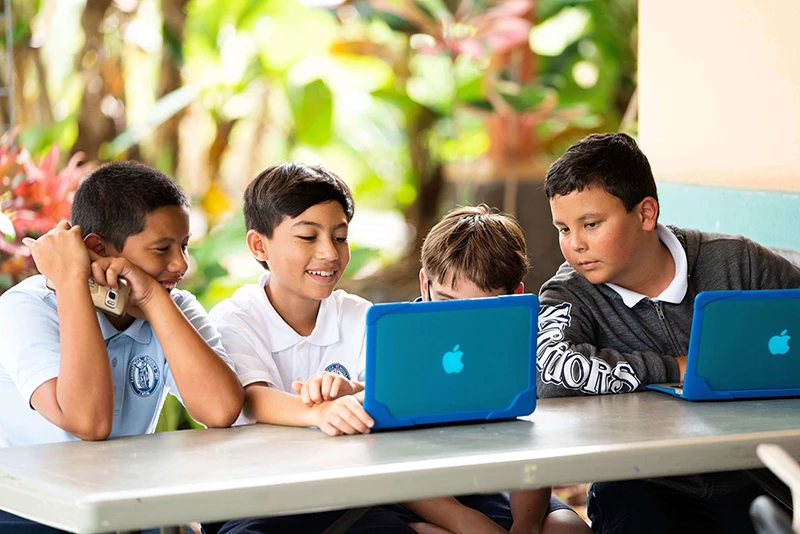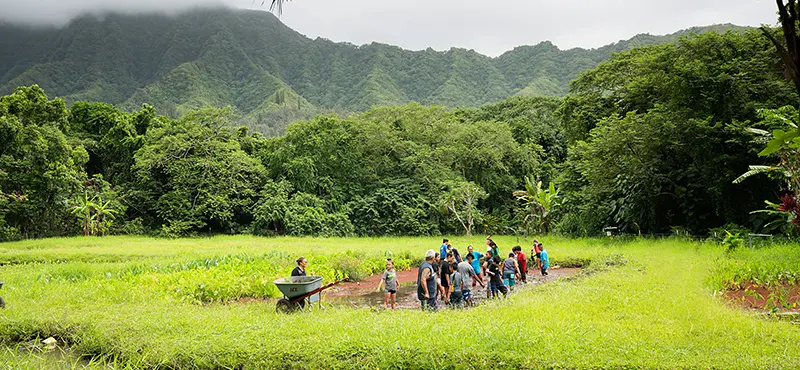When R. Mililani Browning KSK’02 read about Lahaina during the kingdom days, she was struck by how different it sounded from today’s hot and arid town.
“One [article] I was reading talks about Lahaina being planted from one end to the other and another one talking about going through the streets and no area was uncultivated,” Browning said.
Restoring that abundance is at the heart of Kamehameha Schools’ efforts, working alongside Lahaina’s ʻōiwi leaders to steward the former capital of the Hawaiian Kingdom with kuanaʻike and kaiāulu. Recently, the ʻĀina Pauahi division began removing eucalyptus trees and installing conservation fencing, some of the first steps in rebuilding the native ecosystem that the Kuʻia ahupuaʻa needs to thrive.
Eucalyptus trees had taken over the ʻāina. Brought to Hawaiʻi in the 1800s for lumber, the species is considered invasive for various reasons, including its rapid growth. They are an obstacle for teams like Jake Kane’s Lahaina-based company, Kane’s Legacy Tree Service, which is at the forefront of the clearing, having previously spent months removing unhealthy trees in residential areas.
“This work hits close to home,” Kane said. “We want to see healthy forests and it’s challenging but being up on the mountain and restoring the landscape ¬– it’s revitalizing emotionally and spiritually, too.”
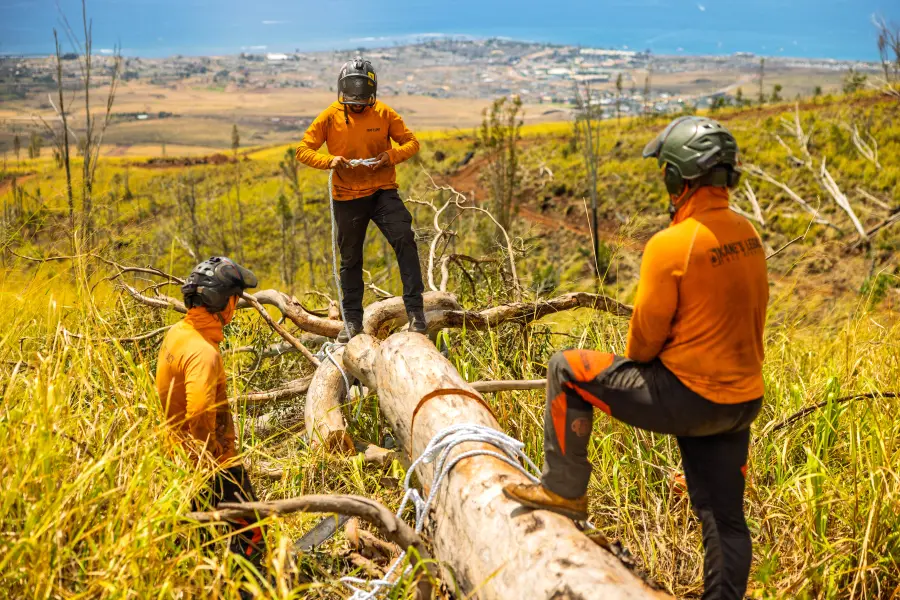

Crews will turn the disposed trees into mulch that will suppress invasive weeds and hold moisture in the soil, creating better conditions for incoming native plants to take root.
At the same time, conservation fencing is going up to protect those new plantings. Deer, pigs and other feral ungulates have devastated native forests by grazing on new growth and uprooting fragile ecosystems. The fencing will create a safe zone for native species to reestablish themselves.
Nearly 1,000 acres will be enclosed, creating a sanctuary for hardy, drought-resistant species like ʻa‘ali‘i and pili, forming the foundation for a healthier, more resilient landscape.
But this initiative is not just about bringing back native forests; it’s about reconnecting people to ʻāina. KS Maui haumāna and community volunteers have been part of teams bringing native plants back to the area.
“These plants are part of our ‘ohana but for so many of us, we don’t have the opportunities,” Browning said. “This project is not only helping us bring back the relationships of those plants to this place, but by bringing in our haumāna and giving new opportunities to be a part of this work, we are helping to restore the relationships between us and those plants.”
Like everything in nature, water is at the heart of this restoration effort and a vision for Lahaina inspired by the past. Browning compares the watershed and traditional Hawaiian irrigation systems to the human kino – just as the heart pumps blood and nutrients, watersheds sustain life throughout the land.
“By restoring this ma uka watershed, we start to bring back health to the heart – the pu‘uwai – of the system, and when you have a healthy heart, everything else can start to be healthy again,” Browning said.
TAGS
ʻāina pauahi,
lahaina,
hoʻōla maui,
aloha ʻāina,
native hawaiian plant month
CATEGORIES
Kaipuolono Article, Regions, Maui, Moloka’i and Lana’i, Themes, Culture, Community, KS Announcements, Newsroom, Maui, Community Education, Community Events, Department News, Alumni, Kapalama, Ho‘ōla Maui, Lahaina, ‘Aina, Lahaina microsite (only)
Print with photos
Print text only

